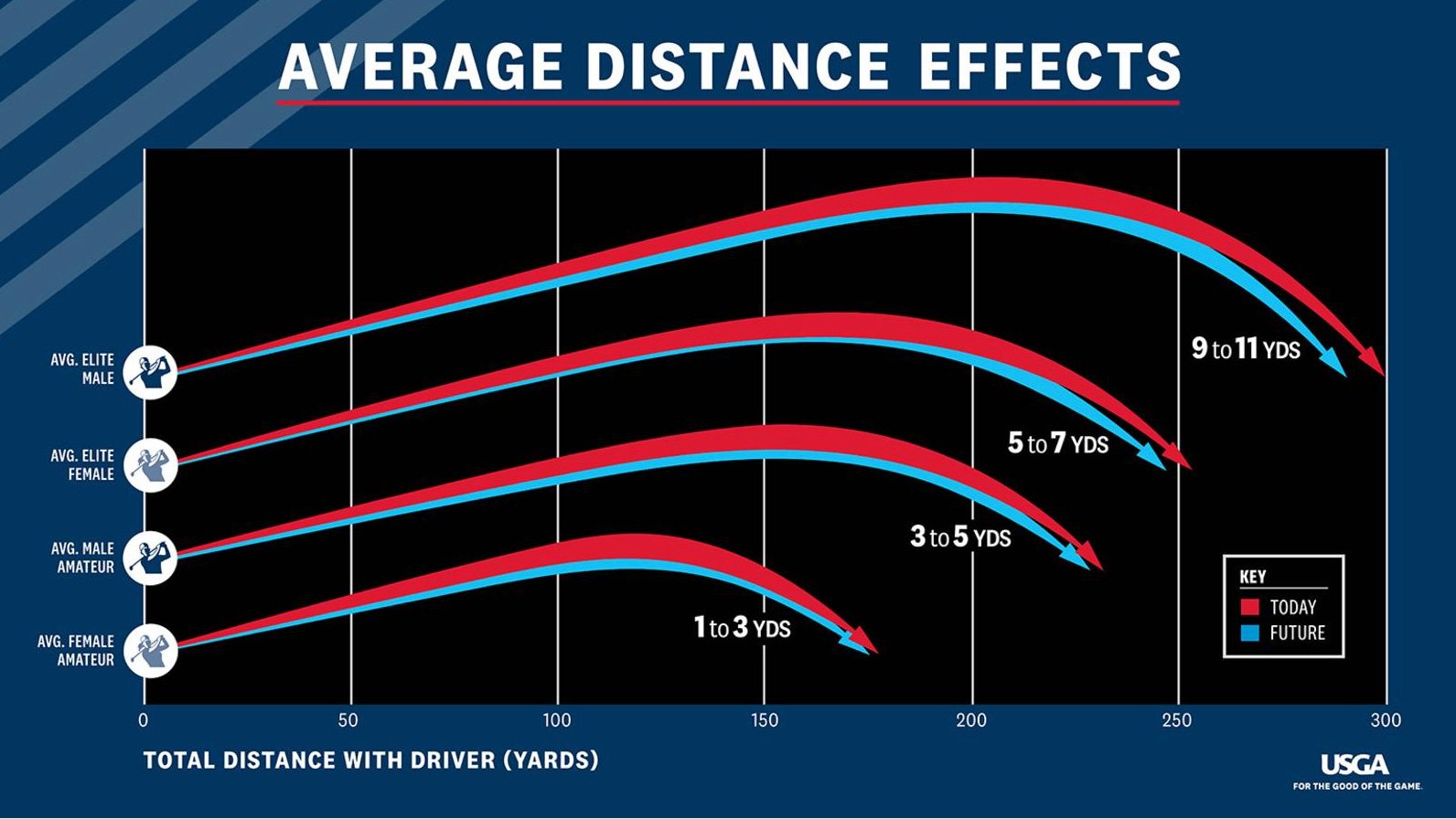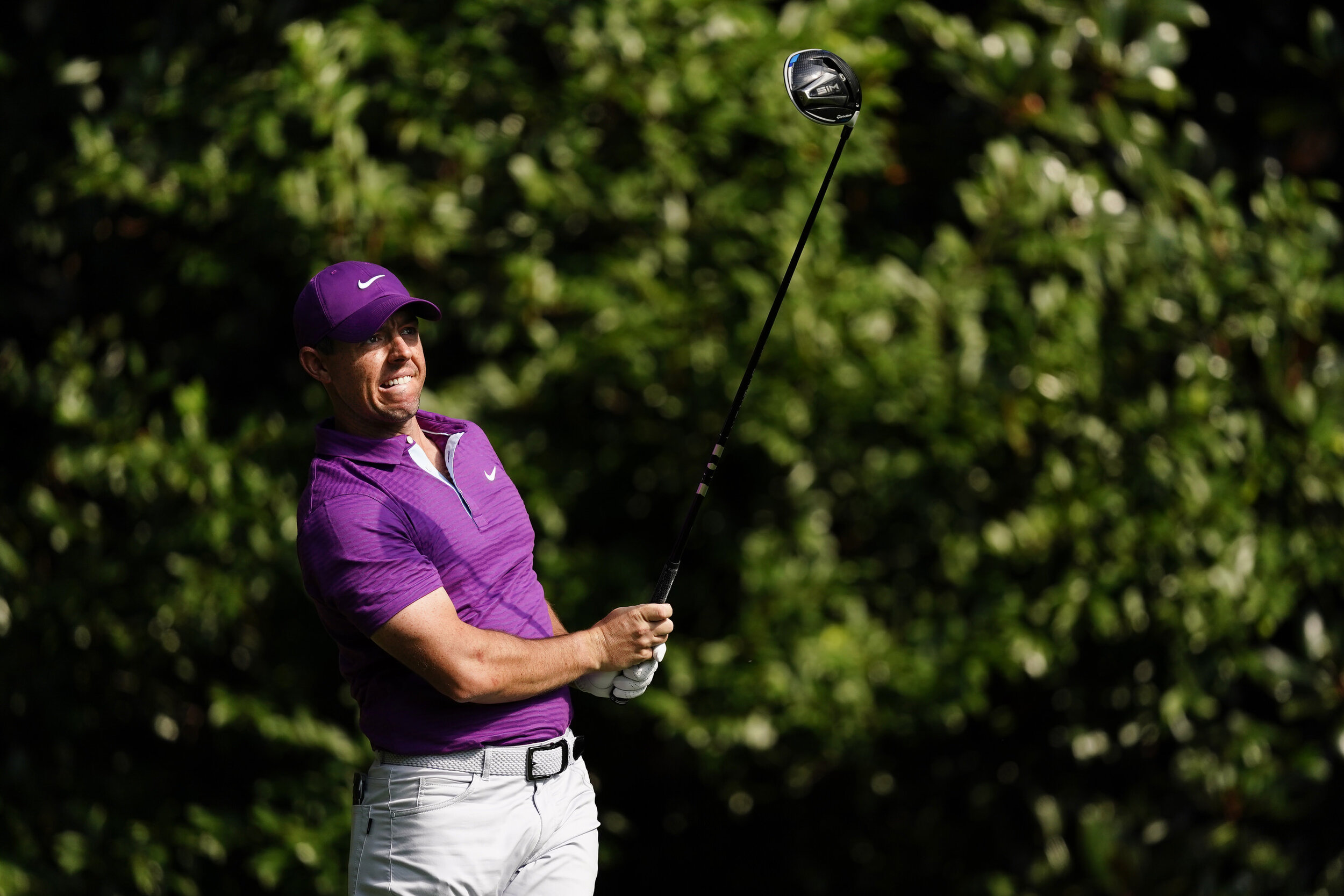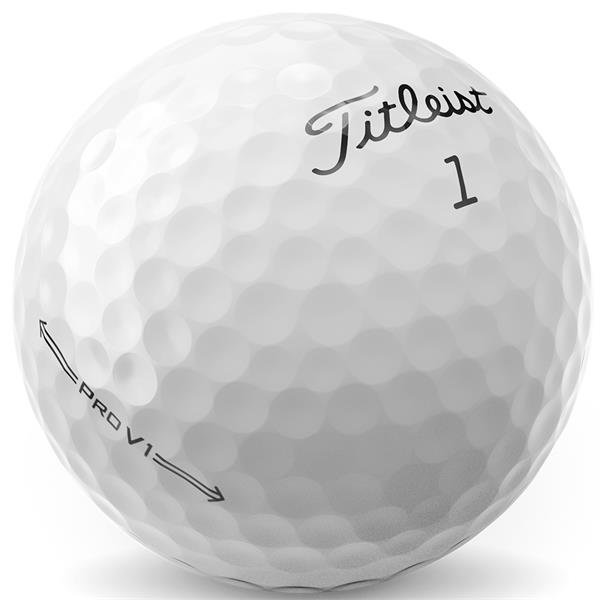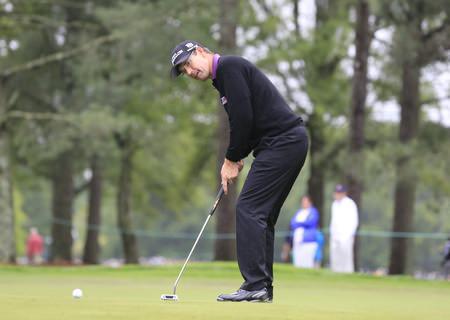R&A and USGA announce distance rollback denounced as "disproportional" by PGA Tour

Via USGA
R&A chief executive Martin Slumbers has defended the decision by golf’s governing bodies that will cost the game’s biggest hitters up to 15 yards in driving distance.
In a statement, the R&A and USGA announced that they will update the testing conditions used for golf ball conformance under the Overall Distance Standard (ODS), which will take effect from January 2028.
The decision, which has been resisted by the likes of the PGA Tour, the PGA of America and many leading players, aims to reduce the impact increased hitting distances have on golf’s long-term sustainability while minimising the impact on the recreational game.
“We are convinced that this decision is one of the key ways of achieving a sustainable future for golf, protecting the integrity of the game and meeting our environmental responsibilities,” Mr Slumbers said.
“The measure we are taking has been carefully considered and calibrated while maintaining the ‘one game’ ethos deemed to be so important to the golf industry. Importantly, it also keeps the impact on recreational golfers to an absolute minimum.
“We are acting now because we want to ensure that future generations can enjoy the unique challenge of golf as much as we do.”
Golf’s longest hitters are expected to see a reduction of as much as 13-15 yards in drive distance.
Existing balls approved for conformance in 2027 may continue to be used by recreational golfers until January 2030 to give golfers, manufacturers and retailers additional time to adjust.
The revised ball testing conditions will be changed for the first time in 20 years with balls tested with a 125-mph clubhead speed (equivalent to 183 mph ball speed); spin rate of 2220 rpm and launch angle of 11 degrees.
The current conditions are set at 120 mph (equivalent to 176 mph ball speed), 2520 rpm with a 10-degree launch angle.
“Governance is hard,” said Mike Whan, CEO of the USGA. “And while thousands will claim that we did too much, there will be just as many who said we didn’t do enough to protect the game long-term.
“But from the very beginning, we’ve been driven to do what is right for the game, without bias. As we’ve said, doing nothing is not an option – and we would be failing in our responsibility to protect the game’s future if we didn’t take appropriate action now.”
Click on each link for official documents and a letter sent to the industry here:
Via USGA
The revised conditions are based on analysis of data from the worldwide tours and the game over several years and are intended to ensure that the ODS (whose limit will remain unchanged at 317 yards with a 3-yard tolerance) continues to represent the ability of the game’s longest hitters.
An analysis of ball speeds among golf’s longest hitters in 2023 shows that the fastest ten players had an average ball speed of 186 mph, while the average ball speed of the fastest 25 was 183.4 mph (the very fastest averaged 190 mph).
While the longest hitters are expected to see a reduction of as much as 13-15 yards in drive distance, average professional tour and elite male players are expected to see a reduction of 9-11 yards, with a 5-7-yard reduction for an average LET or LPGA player.
The change in testing speed is expected to have a minimal distance impact, 5 yards or less, for most recreational golfers.
Research shows an average swing speed of 93 mph for male golfers and 72 mph for female players, the governing bodies said.
More than 30 percent of all golf ball models submitted for conformance across the game are expected to remain conforming after these changes are applied.
All golf ball and club manufacturers were advised of the decision on Tuesday and were given full technical details and an implementation timeline.
In addition to the new ball-testing conditions, the governing bodies said they will expand the testing approach to better detect ‘Driver Creep,’ which can result in drivers exceeding the limits set out in the Equipment Rules.
They will also “continue to monitor drivers and explore possible additional options related to distance”, adding that they will “research the forgiveness of drivers and how they perform with off-centre hits.”
Rory McIlroy, the biggest hitter on the PGA Tour, backed the decision and slammed those who oppose the measures
“I don't understand the anger about the golf ball roll back," McIlroy wrote in X, formerly Twitter, on Sunday.
"It will make no difference whatsoever to the average golfer and puts golf back on a path of sustainability.
"It will also help bring back certain skills in the pro game that have been eradicated over the past two decades.
"The people who are upset about this decision shouldn't be mad at the governing bodies, they should be mad at elite pros and club/ball manufacturers because they didn't want bifurcation.”
Padraig Harrington also made his views known on social media.
“The TOUR believes the proposed increase in test clubhead speed to 125 mph is disproportional to the rate of increase it sees when analyzing PGA TOUR radar data”
“I can’t think of a reason why our game’s governing bodies would not act in golf’s best interest,” he said of the R&A and USGA.
“This is just one of many rules they change every few years. They don’t always get it right ‘penalty area’. But they act in the group’s best interest, if not always in the individual’s best interest.
“If it doesn’t work they can always change it back.”
Keegan Bradley is not a fan.
“I think we constantly get penalised for mistakes they [USGA and R&A] make,” he said last week.
“Whether if they let the ball go too far, that's not our problem. They [are doing this] to punish not only the professional golfers, but the world of golf for something that they screwed up on.
“I really think it's one of the dumbest things I've ever heard of.”
The PGA Tour is not pleased either, per a press release by the Tour:
PGA TOUR Commissioner Jay Monahan promised in a memo to the TOUR’s membership to continue sharing feedback with the governing bodies about the change and working to find other avenues to respond to increased distance.
“In conjunction with guidance from the Player Advisory Council, Player Directors and Policy Board, we will continue to share our feedback with the USGA and The R&A,” Commissioner Monahan wrote. “We will also continue efforts we are making using the breadth of ShotLink data to understand how course set-up, design and other competitive characteristics can help mitigate the effects of distance while also providing the opportunity for a diverse skill set to succeed at the highest level.”
Wednesday’s announcement included an across-the-game increase to the test clubhead speed used to determine golf ball conformance, increasing from 120 mph to 125 mph at launch conditions of 11 degrees and 2,220 rpm (currently 10 degrees and 2,520 rpm). The change will take effect in January 2028, and will affect recreational players beginning in 2030.
The TOUR believes the proposed increase in test clubhead speed to 125 mph is disproportional to the rate of increase it sees when analyzing PGA TOUR radar data, and that a more moderate adjustment is appropriate.
Wednesday’s announcement also includes a new testing approach to address “creep” in the spring-like effect of driver faces, as well as a statement that the USGA and The R&A will continue to explore possible options related to distance and the driver. The TOUR continues to support the suggested concept of adding an additional testing protocol to address the issue of “creep” on the spring-like effect of driver faces.






